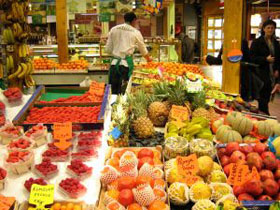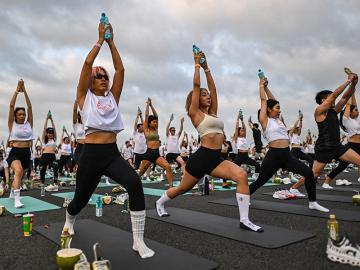
Visual Equity: Being Front And Centre Increases Sales
Unseen is unsold
“Unless you’re Coca-Cola,” says INSEAD Associate Marketing Professor Pierre Chandon, “it’s important to be visible on the shelves.”
The answer today is “all of the above.” But, cautions Chandon, marketing managers beware: unseen is unsold. The impact of being visible in the store, where the majority of purchases are still made -- so-called ‘visual equity’ -- is more important than brand awareness (or ‘memory equity’) for two reasons.
“First, it’s a precursor of choice,” Chandon says. “If people don’t see you, there’s no way their brand preference can have an impact. Second, consider that a hypermarket has up to 100,000 items for sale - even more if you go online, where literally millions of products are available. Our study shows that about two-thirds of products are never seen, never looked at by potential customers. Consumers have no way of finding all the products that are available, so you have to be visible.”
Chandon’s research, conducted in the context of the INSEAD-Wharton alliance with Wharton professors Wes Hutchinson and Eric Bradlow, with Scott Young from Perception Research Inc., examines the effect of in-store marketing on both attention and choice and shows that the best way to sell your product at that vital point-of-purchase interface is to be sure your product is in the consumer’s face -- literally. But it’s an approach that works. “If you’re located at the top of the shelf, it increases the percentage of people who see you by about 20 per cent, but it also increases (the likelihood of) your brand being chosen by the same amount. And we also found that if you’re in the middle of a shelf placement and if you can increase the number of facings, the chances you’ll be seen and bought are increased.”
The data supporting these statements are dramatic. “If you double the amount of ‘facing’ on the shelf, you will increase your ‘noting’ -- whether or not customers actually see you - by about 28 per cent, and you will increase your chances of being chosen by about 10 per cent,” Chandon says. The impact of shelf visibility on low-market-share brands is even more dramatic. “You’ll find you can increase your chances of being chosen by 67 per cent,” he says.
Chandon’s statistics are based on real evaluation of human shoppers making purchase decisions while the location of their eyes is being tracked. “What’s fascinating is that we found that placement doesn’t just have a direct effect on attention,” says Chandon. “Yes, if your product is bright and visible, people will see it, but people also make inferences about a brand relative to where it’s placed on the shelf.”
In other words, shelf placement can have an impact on the way customers perceive a brand. “People expect things on the top to be of higher quality. In fact, they expect things on top to be better in general -- you know, Heaven is up there, hell is at the bottom. So another question for marketing managers to consider is, ‘what inferences will people make about my brand as a result of my visibility?’ You can begin to change the image of a brand just by its placement on the shelf. ”
Chandon also found that shelf placement can attract new customers to a brand. “If you’re targeting young people or educated people with an open mind who don’t buy just based on brand or based on price, you will increase the effect of this ‘visual equity.’”
The same principles of visibility hold true for online sales, where ensuring search engines are primed with key words for your brand will increase visibility.
But post-shopping follow-up questions revealed some shocking disparities. “We found that people have no intuition about what they look at,” says Chandon. “If you ask people: ‘What do you remember seeing?’ they will tell you what they typically like, what they normally do, what they think they do, which has no relation with what they actually look at.” In other words, shoppers might think they’ve looked at one particular brand but have actually spent their time gazing at another.
You pay for prime placement of course - on the shelves of a store or online. But Chandon says his research shows it’s money well spent, and suggests marketing managers re-allocate their budgets to pay more attention to point of purchase and think more about brand presence instead of just brand preference. “Spending some of your marketing money at the point where people actually make the decision in the store will help increase your brand awareness and visibility and perhaps even your brand image. The point of purchase is not just a distribution tool; it’s a communication tool,” says Chandon. “What we found is you’re going to get a better return on your marketing investment if you try to make your brand more visible.”
Click here to access Chandon et al’s working paper: ‘Does In-Store Marketing Work? Effects of the Number and Position of Shelf Facings on Brand Attention and Evaluation at the Point of Purchase’.
[This article is republished courtesy of INSEAD Knowledge
http://knowledge.insead.edu, the portal to the latest business insights and views of The Business School of the World. Copyright INSEAD 2023]
Post Your Comment















